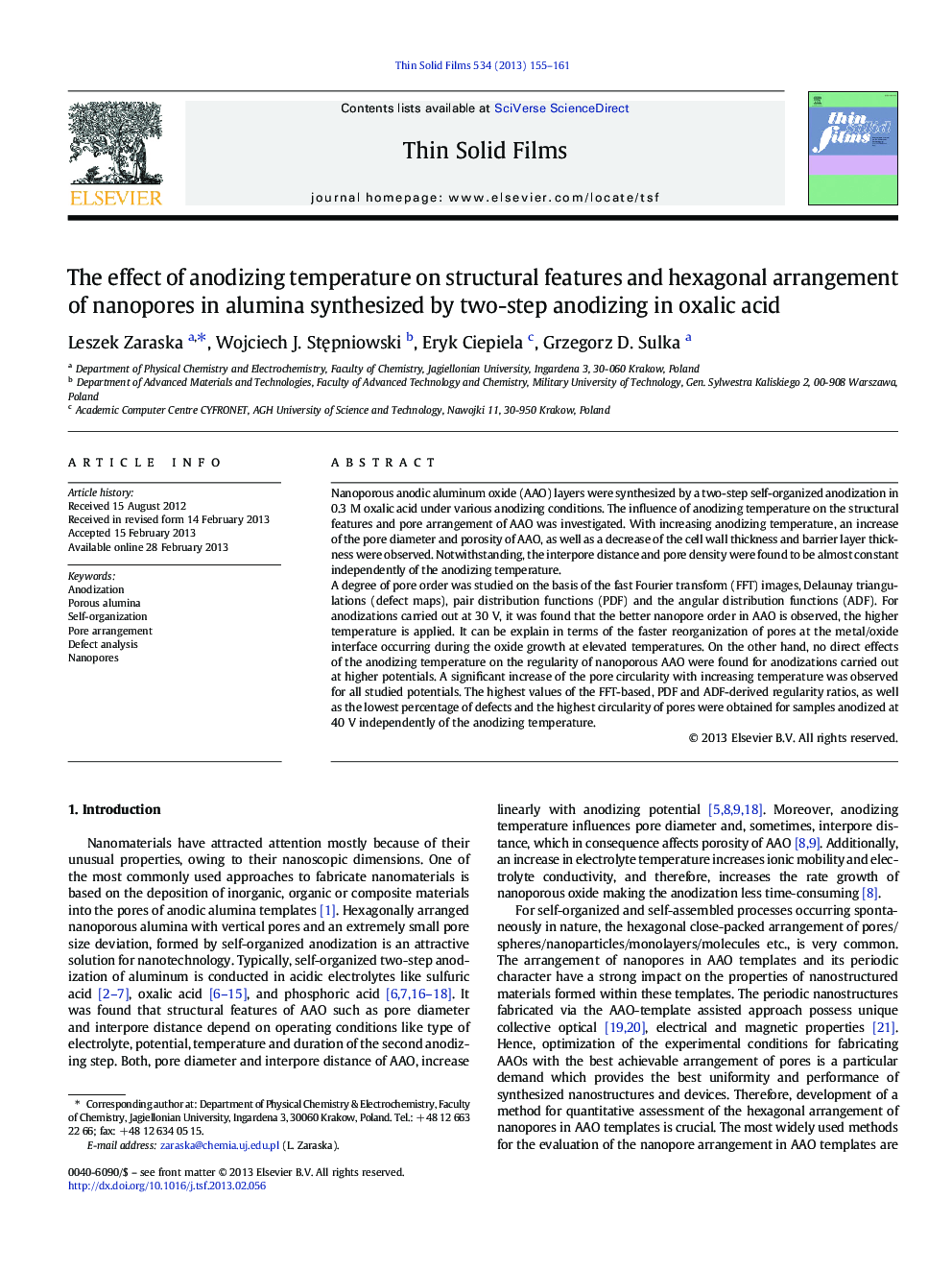| Article ID | Journal | Published Year | Pages | File Type |
|---|---|---|---|---|
| 1666261 | Thin Solid Films | 2013 | 7 Pages |
•Anodic alumina layers were prepared by anodizing in oxalic acid.•The effect of anodizing temperature on nanopores morphology was studied.•Complex characterization of the nanopore arrangement is presented.
Nanoporous anodic aluminum oxide (AAO) layers were synthesized by a two-step self-organized anodization in 0.3 M oxalic acid under various anodizing conditions. The influence of anodizing temperature on the structural features and pore arrangement of AAO was investigated. With increasing anodizing temperature, an increase of the pore diameter and porosity of AAO, as well as a decrease of the cell wall thickness and barrier layer thickness were observed. Notwithstanding, the interpore distance and pore density were found to be almost constant independently of the anodizing temperature.A degree of pore order was studied on the basis of the fast Fourier transform (FFT) images, Delaunay triangulations (defect maps), pair distribution functions (PDF) and the angular distribution functions (ADF). For anodizations carried out at 30 V, it was found that the better nanopore order in AAO is observed, the higher temperature is applied. It can be explain in terms of the faster reorganization of pores at the metal/oxide interface occurring during the oxide growth at elevated temperatures. On the other hand, no direct effects of the anodizing temperature on the regularity of nanoporous AAO were found for anodizations carried out at higher potentials. A significant increase of the pore circularity with increasing temperature was observed for all studied potentials. The highest values of the FFT-based, PDF and ADF-derived regularity ratios, as well as the lowest percentage of defects and the highest circularity of pores were obtained for samples anodized at 40 V independently of the anodizing temperature.
